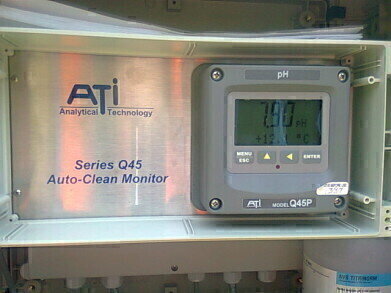Water/Wastewater
The Royal Mint Achieves New Level of Trade Effluent Monitoring
Feb 18 2013
The Royal Mint has selected Analytical Technology (UK) to equip its new effluent treatment plant.
The Royal Mint is one of the world’s leading export mints, making coins and medals for an average of 60 countries every year. Located in Llanstrisant, South Wales, the headquarters were opened in 1968 by the Queen in readiness for the introduction of decimal coinage. With a first responsibility to make and distribute United Kingdom coins, the company employs more than 700 people and operates round-the-clock for 50 weeks a year.
With the treatment of trade effluent increasingly coming under the spotlight, The Royal Mint recently embarked on a multi-million pound project to build a new effluent treatment plant to replace two existing treatment lines and support increased production capacity from two new nickel plating lines. The new plant would need to monitor hydrogen peroxide levels, pH and turbidity to ensure the safety of the effluent being discharged.
The new effluent treatment plant aimed to allow the business to discharge 100% of its trade effluents into the sewer, requiring first class monitoring instrumentation to ensure water quality. If trade effluents are not safe to be released into a sewer, there is a requirement for companies to either change their process to no longer produce the effluent, treat the effluent before discharging to the sewer or pay for it to be taken off site, each option both time consuming and costly.
The Royal Mint selected Analytical Technology’s pH, hydrogen peroxide and turbidity sensors for its water monitoring needs. The Q45P AutoClean pH monitor with MCERTS classification will be used to control pH levels throughout the nickel-plating process and the pH correction process in the new treatment plant, while the Q45H/84 hydrogen peroxide sensors would monitor the effluent to ensure peroxide levels remained low enough to allow efficient effluent treatment. A minimal maintenance instrument, the ATI d15/76 AutoClean turbidity monitors were chosen to determine water quality by measuring the degree to which the water has lost its transparency due to the presence of suspended solids. ATi’s F12 gas detection system was also implemented to protect employees from harmful exposure.
Graham Hartry, Environmental Manager, Blank Processing, The Royal Mint explains: “Our new effluent treatment plant has been built using the Best Available Technology (BAT) and will significantly reduce the amount of effluent discharged, allowing us to recycle wherever possible. The use of Analytical Technology’s pH, hydrogen peroxide and turbidity monitors has allowed us to regulate the levels of chemicals and suspended solids within our effluent discharge, ensuring that we comply with stringent regulations and do our utmost to protect the environment.”
As a result of the new effluent treatment plant incorporating Analytical Technology instrumentation, The Royal Mint discharge 100 per cent of its trade effluents into the sewer, without damaging the sewer infrastructure or the environment. Key benefits include the instruments being easy to set-up and maintain, delivering reliable and compliant results as well as delivering high levels of customer support to keep the plant running.
Digital Edition
AET 28.4 Oct/Nov 2024
November 2024
Gas Detection - Go from lagging to leading: why investment in gas detection makes sense Air Monitoring - Swirl and vortex meters will aid green hydrogen production - Beyond the Stack: Emi...
View all digital editions
Events
Dec 02 2024 London, UK
Dec 03 2024 Dusseldorf, Germany
Dec 11 2024 Shanghai, China
Jan 12 2025 Abu Dhabi, UAE
Jan 14 2025 Abu Dhabi, UAE








.jpg)










